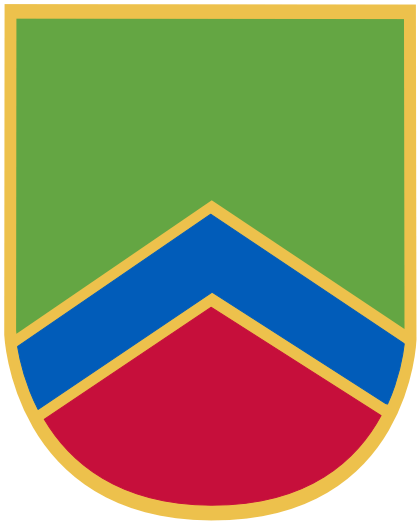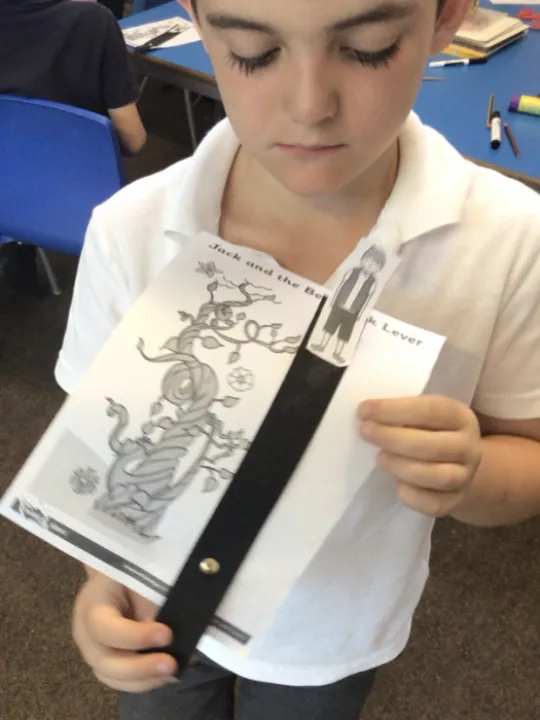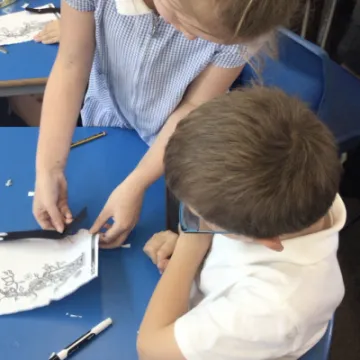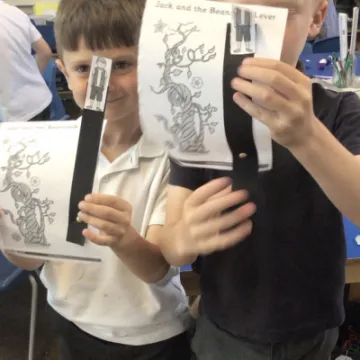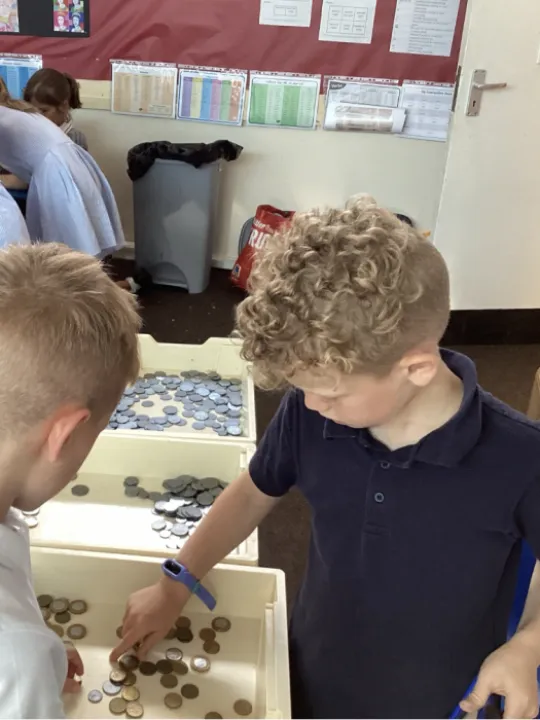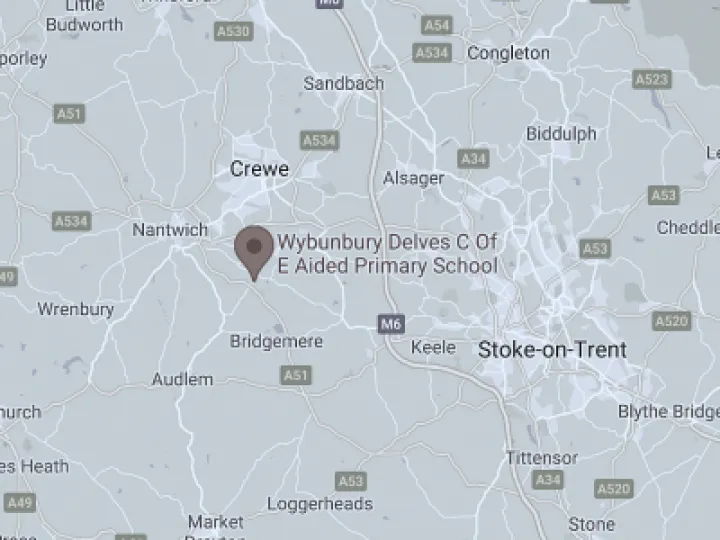Year 2 Weekly News: 16.6.23
Another week has flown by in Year 2...
In our English lessons this week, we embarked on an exciting new unit centred around the captivating book, "The Night Gardener." This intriguing story served as the foundation for our exploration of language, creativity, and storytelling. To begin our journey, we immersed ourselves in the world of the story by examining various objects that played significant roles in the narrative. We posed thought-provoking questions about these objects, including ladders, gardening gloves, and a distinctive flat cap. This exercise sparked our curiosity and set the stage for deeper engagement with the text. As we delved further into the story, we relied on picture clues to unravel its mysteries. These visual cues allowed us to make predictions, develop our comprehension skills, and gradually piece together the narrative's unfolding events. With each chapter we explored, our excitement and anticipation grew, eagerly awaiting the next twist and turn. Throughout the week, we honed our writing skills by crafting sentences that incorporated expanded noun phrases and effectively employed commas in a list. This emphasis on descriptive language and punctuation added depth and clarity to our written expression, enhancing our ability to bring our ideas to life on the page. Looking ahead, we are eagerly anticipating the upcoming week when we will delve into the art of planning and crafting setting descriptions. Drawing inspiration from "The Night Gardener" and our growing understanding of storytelling techniques, we will embark on our own creative writing journey, capturing the essence of unique settings through vivid descriptions.
During our Maths lessons this week, we immersed ourselves in the fascinating world of position and directions. This short but impactful unit allowed us to explore the vocabulary and concepts associated with spatial awareness and movement. We began by familiarising ourselves with key terms such as "quarter turn," "clockwise," and "anti-clockwise." These terms provided us with a common language to describe and communicate different types of movement and rotation. Using this newfound vocabulary, we tackled a variety of questions and problem-solving tasks that involved applying directions. We engaged in activities where we had to navigate through imaginary landscapes, determine the best routes to reach destinations, and make precise movements based on given instructions. These exercises sharpened our spatial reasoning skills and honed our ability to understand and follow directions accurately. Through our exploration of position and directions, we gained a deeper understanding of how objects can be arranged in space and how they can be manipulated to achieve different orientations. This knowledge is not only essential for mathematics but also has practical applications in everyday life, such as reading maps, giving directions, and following instructions.
During our Steps to Read sessions this week, we delved into the captivating book titled "THE flower." This enchanting story took us on a journey alongside the main character, Brigg, as we explored the world of imagination and discovery. We began by immersing ourselves in the text, reading each chapter with curiosity and excitement. Along the way, we encountered thought-provoking events and encountered various challenges and triumphs with Brigg. To deepen our understanding of the story, we engaged in comprehensive discussions and answered a range of comprehension questions. These questions enabled us to analyse the plot, characters, and themes, while also encouraging us to think critically and draw inferences from the text.
During our R.E this week, we continued our exploration of Judaism and focused specifically on the observance of Shabbat. To deepen our understanding of this important Jewish practice, we engaged in various activities and discussions. To begin, we watched a thought-provoking film that provided insights into the key elements and significance of Shabbat. We observed and reflected upon the rituals, traditions, and symbols associated with this special day of rest and worship in the Jewish faith. Drawing inspiration from our learning, we embarked on a creative endeavour by designing our own Shabbat posters. These posters served as visual representations of the essential aspects of Shabbat that we had discovered and explored. Through our artistic expressions, we aimed to capture the spirit and meaning of Shabbat, incorporating symbols, images, and written descriptions.
During our Computing lessons this week, we delved into the fascinating topic of IT in the real world. Our focus was on exploring how technology is utilised in shops, with a particular emphasis on barcodes. We began by discussing and learning about the purpose and functionality of barcodes. We discovered that barcodes serve as a unique identifier for products, containing encoded information that can be scanned and interpreted by barcode readers or scanners. To gain hands-on experience, we engaged in a creative activity where we designed and created our own barcodes. Using our imaginations, we assigned different codes to represent various products and items. This exercise allowed us to understand the concept of encoding and decoding information through barcodes. Taking our learning a step further, we embraced role-playing by setting up a simulated shop environment. In this scenario, we utilised our iPads as barcode scanners, using the built-in camera to scan the barcodes we had created. Through this interactive experience, we simulated the process of scanning and identifying products, enhancing our understanding of how technology streamlines operations in a real-world retail setting.
During our Science lessons this week, we delved deeper into our exploration of plants and their fascinating adaptations to different environments. We expanded our understanding by focusing on the unique conditions and habitats in which plants thrive, specifically in deserts, arctic regions, and rainforests. To begin, we engaged in discussions and research to understand the distinct characteristics of each habitat. We explored the extreme conditions of deserts, where plants have to withstand high temperatures, limited water availability, and sandy soil. We contrasted this with the cold and icy environments of the arctic, where plants have to adapt to freezing temperatures and a short growing season. Lastly, we delved into the lush and diverse ecosystem of rainforests, where plants must adapt to high humidity, abundant rainfall, and competition for sunlight. By focusing on these different habitats, we gained insights into the remarkable adaptations that plants have developed to survive and thrive in such challenging conditions. We explored various plant species found in each habitat, studying their unique characteristics, such as deep root systems, water storage mechanisms, specialised leaves, and symbiotic relationships with other organisms. Through this exploration, we deepened our appreciation for the incredible resilience and diversity of plant life on our planet. We recognized the interconnectedness between plants and their environments, and the crucial role they play in maintaining ecological balance and supporting diverse ecosystems.
During our Heartsmart sessions this week, we delved further into our unit titled "No Way Through Isn't True." The focus of our discussion was centred around the concept of barriers and how they can hinder us from achieving our goals and targets.
We began by reflecting on personal experiences and situations where we encountered obstacles or barriers that seemed to stand in our way. Through open and honest conversations, we shared our thoughts and feelings about these challenges, recognizing that barriers can come in various forms and may differ for each individual. We discussed how barriers can be physical, such as a locked door or a high wall, preventing us from reaching a specific target. Additionally, we explored how barriers can also be internal, including self-doubt, fear, or negative beliefs that limit our potential and discourage us from pursuing our goals. Through engaging activities and discussions, we learned about the importance of resilience, perseverance, and finding ways to overcome or bypass barriers. Remember the Lord in everything you do, and he will show you the right way. Proverbs 3:6
During our Design and Technology (DT) lessons this week, we made further progress in our unit on levers and mechanisms. Our main focus was on exploring and constructing levers, which allowed us to create a captivating moving Jack in the Beanstalk picture. To begin, we revisited the concept of levers and their role in creating movement. We discussed different types of levers and their applications in everyday life, ranging from seesaws in the playground to scissors and tongs in our homes. This helped us understand how levers can be used to amplify force or change the direction of motion. Equipped with this knowledge, we set out to design and build our own lever and pivot mechanism. We carefully planned our designs, considering the materials and components needed to make our moving picture come to life. With a combination of wood, cardboard, and other craft materials, we crafted a sturdy base for our lever system. Using precise measurements and cutting techniques, we constructed a lever arm with a pivot point that allowed it to rotate smoothly. We attached our Jack in the Beanstalk artwork to the lever arm, ensuring it was securely fastened. As we operated the lever by applying force at one end, we observed the enchanting movement of Jack climbing up the beanstalk on our artwork.
What a fantastic week of learning!
Mr Dale
Quick Links
Contact Us
office@wybunburydelves.co.uk
01270 841302
Wybunbury Delves
Bridge Street
Wybunbury
Nantwich
CW5 7NE
